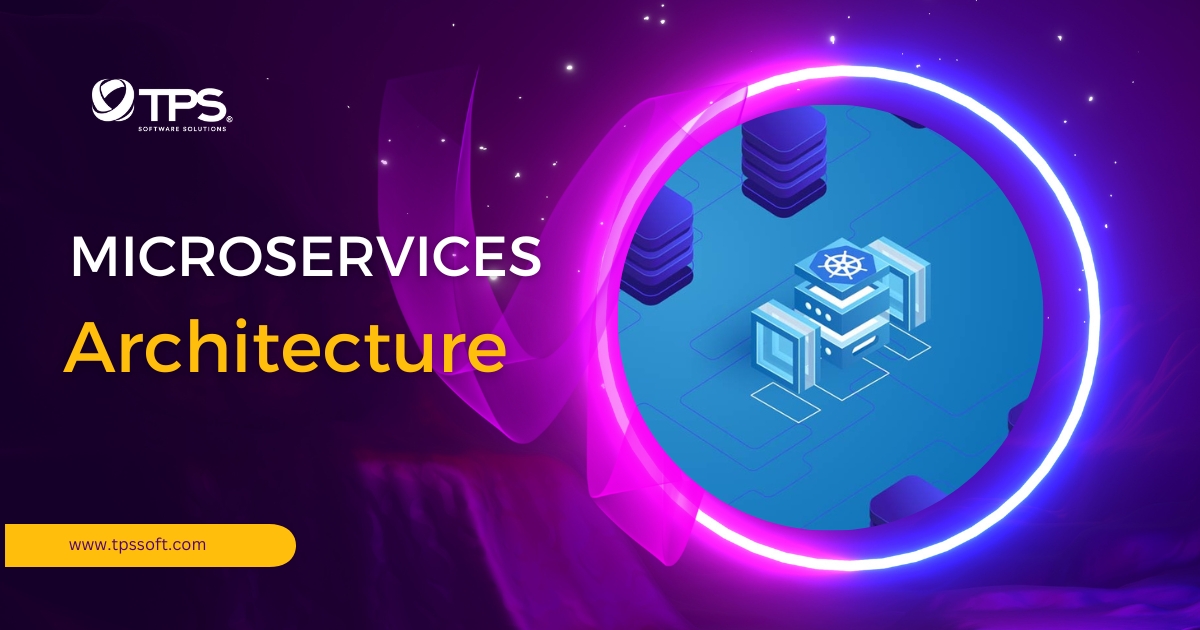序章
現在の急速に変化するデジタルの世界では、企業は常にスケーラブルでありながら変動する市場の要求に高度に適応可能なソフトウェアソリューションを提供しようとしています。このため、マイクロサービスアーキテクチャの人気が高まっています。これは革新的なアプローチであり、組織が拡張性と俊敏性が向上したソフトウェアアプリケーションを開発・展開できるようにしています。この記事では、マイクロサービスアーキテクチャの利点とスケーラブルで俊敏なソフトウェア開発における役割について探ってみましょう。
マイクロサービスアーキテクチャとは何か?
マイクロサービスアーキテクチャとは、アプリケーションを小さな独立したサービスの集合として構築するソフトウェア開発のアプローチです。大規模でモノリシックなアプリケーションを構築する代わりに、マイクロサービスはシステムを複数のモジュラーコンポーネントに分割し、各サービスが特定のビジネス機能や機能を担当します。これらのサービスは軽量なメカニズム(通常はAPI:アプリケーションプログラムインターフェース)を介してお互いと連携します。
各マイクロサービスは独立したエンティティとして動作し、独自のプロセスまたはコンテナ内で実行され、他のサービスと独立して開発、展開、スケールアップが可能です。この分離により、開発チームは異なるサービスに同時に取り組むことができ、より迅速な開発サイクルを実現し、アジャイルな開発プラクティスを促進できます。
伝統的なモノリシックなアプリケーションとは異なり、1つのコードベースとデータベースですべての機能を処理するのではなく、マイクロサービスはそれぞれ専用のデータベースを持ち、異なるテクノロジーやプログラミング言語を使用できます。この柔軟性により、各マイクロサービスに特定の要件に応じた最適な技術スタックを選択できるため、1つのテクノロジーに制約されることなく対応できます。
マイクロサービスアーキテクチャは、サービス間の緩やかな結合を促進し、1つのサービスの変更が他のサービスに重大な影響を与えないようにします。これにより、1つのサービスで更新を行ったり、新しい機能を追加したり、問題を修正したりする際に、全体のシステムに影響を及ぼさずに対応できます。また、マイクロサービスアーキテクチャは、1つのサービスの障害や問題がそのサービス内に限定され、全体のアプリケーションの機能とパフォーマンスへの影響を最小限に抑えることができます。
マイクロサービスアーキテクチャを採用することで、組織は拡張性、俊敏性、柔軟性、耐障害性などの複数の利点を享受できます。マイクロサービスのモジュラーな性質により、特定のサービスを簡単にスケーリングして負荷を処理することができ、新しい機能の迅速な開発と展開を容易にし、継続的な改善とイノベーションをサポートします。さらに、マイクロサービスアーキテクチャは、多様な技術スタックを活用し、第三者サービスをシームレスに統合することが可能となり、変化するビジネス要件に適応し、ダイナミックなデジタルの世界で競争力を維持することができます。

マイクロサービスアーキテクチャの利点
Microservices architecture offers numerous benefits for organizations developing software applications. Here are some of the key advantages:
1. Scalability:
Microservices architecture enables organizations to achieve enhanced scalability. By breaking down an application into smaller, independent services, each service can be scaled individually based on its specific requirements. This modular approach allows organizations to allocate computing resources more efficiently, ensuring optimal performance even under heavy workloads. Scaling specific services without impacting the entire application results in improved responsiveness and user experiences.
2. Agility and Faster Time-to-Market:
Microservices architecture promotes an agile development approach, allowing teams to work on different services concurrently. This distributed development approach reduces dependencies and bottlenecks, enabling faster development cycles and shorter time-to-market for new features and updates. Microservices facilitate continuous deployment and integration, allowing for faster iterations, frequent releases, and rapid response to customer feedback. This agility is crucial in highly competitive markets where speed and innovation are essential.
3. Flexibility and Technology Diversity:
Microservices architecture provides organizations with the flexibility to choose the most suitable technology stack for each service. Since each service operates independently, organizations can select different programming languages, frameworks, and databases based on the specific requirements of each service. This flexibility empowers organizations to adopt new technologies, experiment with different tools, and integrate third-party services seamlessly, without impacting the entire application. It also facilitates easier adoption of emerging technologies and market trends.
4. Fault Isolation and Resilience:
In a microservices architecture, if one service fails or encounters issues, it doesn’t bring down the entire system. The decoupled nature of microservices ensures fault isolation, where failures are contained within specific services, minimizing the impact on the overall application. This isolation enhances the robustness and reliability of the system, as failures in one service do not cascade to others. It also simplifies troubleshooting and debugging, making it easier to identify and resolve issues quickly.
5. Improved Team Productivity:
Microservices architecture promotes smaller, focused teams responsible for individual services. This division of labor allows teams to have a deep understanding of their services, leading to better productivity and ownership. Developers can work on specific services independently, making it easier to develop, test, deploy, and maintain them. Smaller codebases and clear service boundaries simplify the development process and reduce the complexity associated with large monolithic applications.
6. Scalable Development and Deployment:
Microservices architecture allows organizations to scale their development and deployment processes. With smaller, loosely coupled services, teams can work independently, developing, testing, and deploying services in parallel. This scalability helps organizations effectively manage larger development projects, allocate resources efficiently, and respond quickly to changing business needs.
Implementing Microservices Architecture
Implementing microservices architecture involves several considerations and steps. Here is a general outline of the implementation process:
1. Identify Suitable Applications:
Determine which applications within your organization would benefit from microservices architecture. Consider applications that are complex, require scalability, have varying functional requirements, or need independent deployment and scaling.
2. Define Service Boundaries:
Analyze the application’s functionality and identify logical boundaries for dividing it into microservices. Each microservice should have a specific business capability and perform a well-defined function. Clearly define the responsibilities and interfaces of each microservice.
3. Design Communication Mechanisms:
Decide on the communication mechanisms between microservices. The most common approach is to use lightweight APIs such as RESTful APIs or message queues. Establish clear protocols and standards for inter-service communication, including data formats, authentication, and error handling.
4. Choose Suitable Technologies:
Select appropriate technologies for implementing each microservice based on its specific requirements. Consider programming languages, frameworks, databases, and other tools. Aim for technology diversity to leverage the best options for each service while ensuring interoperability.
5. Ensure Data Consistency:
Determine how data will be managed and synchronized across microservices. Depending on the application, you may choose between maintaining separate databases for each microservice, implementing event-driven architectures, or employing distributed data management strategies like distributed transactions or eventual consistency.
6. Establish Deployment and Orchestration:
Set up a robust deployment and orchestration system to manage the lifecycle of microservices. Use containerization technologies like Docker or Kubernetes to package and deploy microservices. Implement continuous integration and continuous deployment (CI/CD) practices to automate the build, test, and deployment processes.
7. Implement Monitoring and Observability:
Establish monitoring and observability mechanisms to gain insights into the performance and behavior of microservices. Utilize logging, metrics, and tracing tools to monitor service health, detect issues, and troubleshoot problems. Implement centralized logging and monitoring solutions to gather and analyze data from multiple microservices.
8. Implement Effective Testing Strategies:
Develop comprehensive testing strategies to validate the functionality, performance, and integration of microservices. Adopt techniques such as unit testing, integration testing, contract testing, and end-to-end testing. Embrace test automation and continuous testing practices to ensure the quality and reliability of microservices.
9. Manage Versioning and Deployment:
Establish versioning and deployment strategies to handle updates and changes to microservices. Use version control systems and adopt practices like semantic versioning to manage changes effectively. Implement canary deployments, blue-green deployments, or feature toggles to enable smooth updates without disrupting the overall system.
10. Embrace DevOps Culture:
Foster a DevOps culture within the development teams to promote collaboration, communication, and continuous improvement. Encourage cross-functional teams responsible for the entire lifecycle of microservices, including development, testing, deployment, and maintenance. Implement agile methodologies and continuous feedback loops to iterate and enhance the microservices architecture.

Real-World Examples of Successful Microservices Implementations
Real-world examples of successful microservices implementations can provide insights into the practical application and benefits of this architectural approach. Here are three prominent examples:
1. Netflix:
Netflix is a renowned streaming platform that has leveraged microservices architecture to achieve scalability, resilience, and rapid innovation. By breaking down their monolithic application into hundreds of microservices, Netflix can handle massive amounts of user traffic and ensure uninterrupted streaming experiences. Each microservice at Netflix is responsible for specific functionalities such as user authentication, content recommendation, billing, and playback. This modular approach allows teams to independently develop, test, and deploy services, enabling frequent updates and feature releases. The use of microservices also enables Netflix to effectively scale their infrastructure based on demand and quickly recover from failures without affecting the overall user experience.
2. Amazon:
Amazon, the global e-commerce giant, has successfully adopted microservices architecture to power its vast and complex platform. With millions of products, personalized recommendations, inventory management, and order processing, Amazon’s system requires high scalability and flexibility. By using microservices, Amazon can independently scale and manage various components of their platform, such as product catalog, customer reviews, payment processing, and shipping. This architectural approach allows different teams to work autonomously, making it easier to develop, test, and deploy new features. Microservices also enable Amazon to experiment with different technologies and business strategies, supporting their continuous innovation and maintaining a competitive edge in the market.
3. Uber:
Uber, the popular ride-sharing platform, relies on microservices architecture to support its global operations and dynamic scaling requirements. With millions of daily rides and real-time location tracking, Uber’s system demands high availability and performance. Microservices enable Uber to divide their platform into smaller services, such as rider management, driver management, trip management, and pricing. This decomposition allows independent development, scaling, and deployment of services to meet the demands of specific regions or user segments. The use of microservices also enables Uber to integrate third-party services, such as payment gateways and mapping services, seamlessly into their platform. This architecture allows Uber to scale its infrastructure efficiently, provide a reliable and consistent experience across various markets, and quickly adapt to changing business needs.
These examples demonstrate how organizations like Netflix, Amazon, and Uber have successfully harnessed the benefits of microservices architecture to build scalable, resilient, and agile systems. By embracing microservices, these companies have achieved faster development cycles, improved scalability, better fault isolation, and the ability to quickly adapt to evolving market demands. These real-world implementations serve as inspiration for organizations considering or already implementing microservices architecture to unlock the potential of their own software applications.
Conclusion
Microservices architecture provides organizations with a powerful framework to build scalable and agile software applications. By decomposing complex systems into smaller, independent services, businesses can scale, develop, and deploy software more efficiently. The modular nature of microservices architecture enables organizations to embrace an agile development approach, continuously improve their applications, and respond quickly to market demands. Furthermore, the flexibility and fault isolation offered by microservices architecture ensure resilience and adaptability in the face of changing requirements and technological advancements. Embracing microservices architecture empowers businesses to stay competitive and deliver software solutions that are scalable, agile, and responsive to customer needs.











